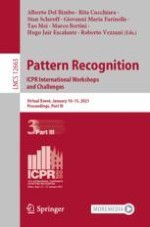2021 | OriginalPaper | Buchkapitel
Predicting Reading Speed from Eye-Movement Measures
verfasst von : Ádám Nárai, Kathleen Kay Amora, Zoltán Vidnyánszky, Béla Weiss
Erschienen in: Pattern Recognition. ICPR International Workshops and Challenges
Aktivieren Sie unsere intelligente Suche, um passende Fachinhalte oder Patente zu finden.
Wählen Sie Textabschnitte aus um mit Künstlicher Intelligenz passenden Patente zu finden. powered by
Markieren Sie Textabschnitte, um KI-gestützt weitere passende Inhalte zu finden. powered by
